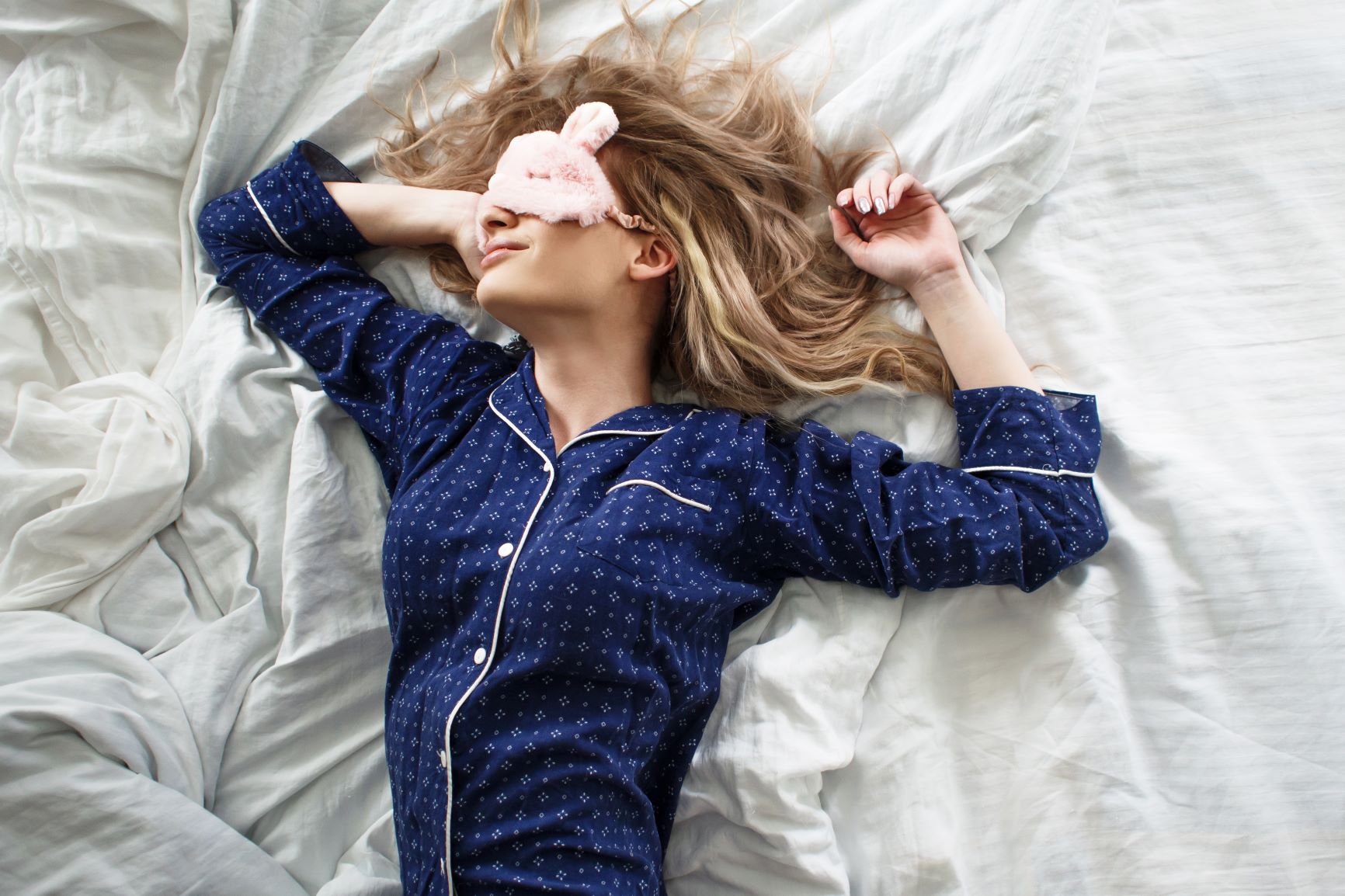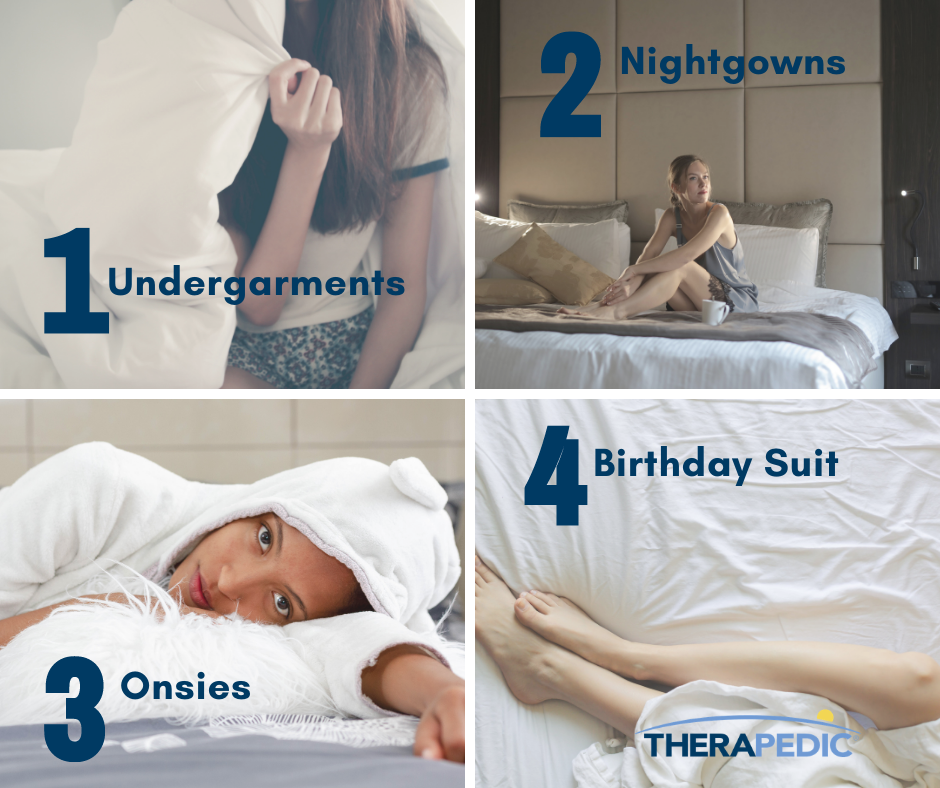What type of clothing items do you wear to bed every night? Have you ever thought about how it affects your sleep?
What we wear to bed is a personal preference, but it’s not always something we give a whole lot of thought to. It usually depends on the temperature of your home, the comfort level of where you’re sleeping, if you’re sleeping alone or with someone else, and so many other factors.
And the term “pajamas” has taken on an ambiguous meaning, now referring to anything we wear to bed -- from underwear to sweatpants to a full nightgown. In that spirit, we’ve decided to dive into four clothing items commonly worn as pajamas and take a closer look at how they might affect sleep.

-
Undergarments. While we don’t know many women who would willingly wear a bra to sleep, some of the most common clothing items worn to bed by the ladies are underpants, socks and even undershirts. The main effect undergarments have on sleep has to do with temperature regulation.
Undergarments make a great clothing option for these sleepers whose temperature fluctuates often throughout the night because they can be easily added or shed as needed. However, if you are going this route make sure the clothing is loose-fitting, as wearing tight-fitting clothing to bed can cause circulation problems and lower melatonin levels.
-
Nightgowns. For cold sleepers, nightgowns and full pajama sets will keep you warm and toasty all night long. While you may think this was a trend that died out after the 1970’s, research shows that about one-third of sleepers still wear nightgowns to sleep.
But sleeper beware, if you’re going with a nightgown, you’re going to want to go with a natural and lightweight material like cotton so that your skin can breathe at night. Cotton clothing is also less likely to cause skin irritation and rashes, especially if it’s a looser fit.
-
Onesies. Did you know onesies were actually made for adults before they became popular for children? That’s because, aside from keeping your toes warm, onesies prevented bugs from getting into people’s pajamas.
But today, onesies are a great choice for babies because they’re safe, simple and comforting. Plus, they’re extremely convenient for parents with young infants who need constant changing. The ease with which they can be taken off and put back on again could actually help parents get back to sleep faster, in turn improving their sleep.
-
Birthday Suit. We’ve heard the many ways clothing can affect sleep, but what about lack of clothing? In fact, many people prefer to shed all clothing before going to bed because it gives them freedom from tangled clothing, can help regulate their body temperature and can improve blood circulation.
With all of these things leading to a better night’s sleep, your body may also release more growth hormones and melatonin, which can have anti-aging effects. There is also evidence that sleeping naked can reduce stress and build confidence.
Next time you crawl into bed, think about how you slept the night before and what you were wearing. One simple clothing change may be the difference between prolonged insomnia and a long, deep, healthy night’s sleep.

